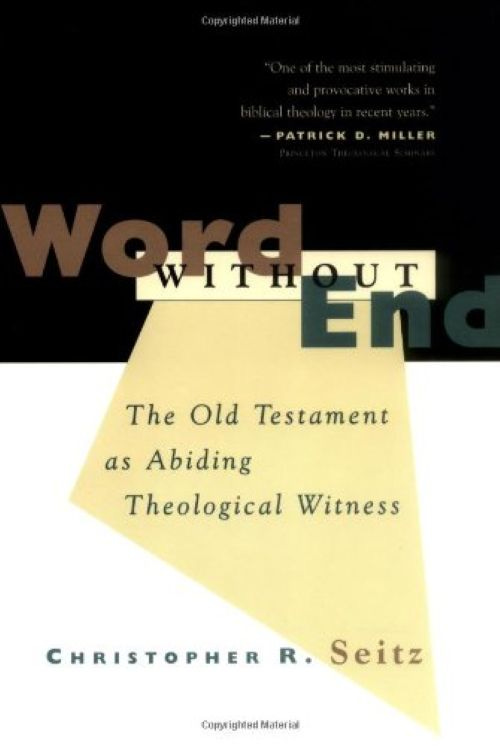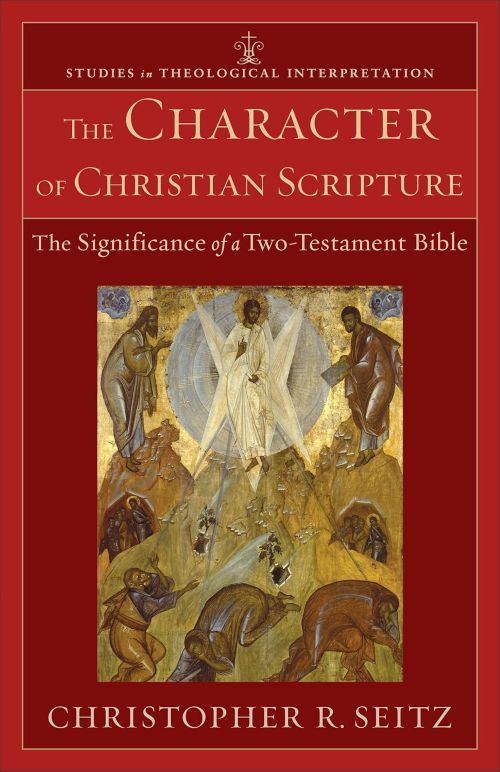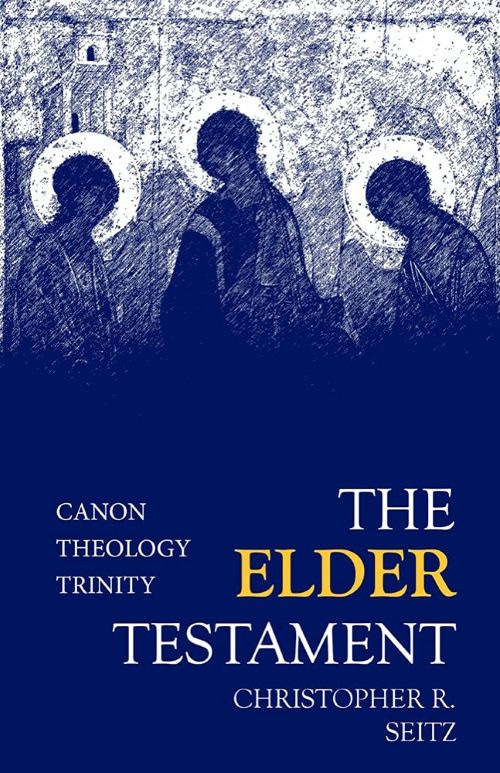Theological Interpretation of Scripture Matters—12
Two Testaments—One Christian Bible
Theological work with Scripture raises a host of questions, as we have already seen with this series. One among this mélange is the problem of the division of the Christian Bible into two testaments. Whatever language we use—First and Second Testaments, Elder and Younger Testaments, Old and New Testaments, and so on—the question remains: How are these two related in our theological work?
Marcion’s (ca. 85–ca. 160 CE) antipathy toward the Old Testament is well known, and his heirs live on, right up to the present. This is true whether we are thinking of supersessionist theological commitments and practices (e.g., Friedrich Schleiermacher) or the unprincipled neglect of the Old Testament in our churches and Bible studies today.
For good reasons, we can easily grasp the need for such books as have recently appeared, books that press followers of Jesus to delve into the Old Testament on its own terms—for example:
John Goldingay, Do We Need the New Testament? Letting the Old Testament Speak for Itself (Downers Grove, IL: IVP Academic, 2015). ISBN 9780830824694. 184 pp.
When John gave me a signed copy of this book, he wrote: “Yes, but not for the reasons you think!”
Brent A. Strawn, The Old Testament Is Dying: A Diagnosis and Recommended Treatment, Theological Explorations for the Church Catholic (Grand Rapids: Baker Academic, 2017). ISBN 9780801048883. 336 pp.
Contemporary academic biblical studies often decries supercessionist tendencies, but voices of concern from that corner can ring hollow. When critical study of the Bible is centered in the public university, the question immediately arises: Why the Christian canon?
Speaking of the New Testament alone, we can observe that, apart from the needs and commitments of the Christian church, we are left with such “New Testament introductions” as those written by Helmut Koester or Bart Ehrman, who include the New Testament’s twenty-seven writings alongside a host of others (for example, “Q,” the Gospel of Thomas, the Gospel of Peter) comprising an amorphous category of “early Christian literature.”1
In this respect, the Old Testament is categorically different, both because the Jewish community’s Tanakh arranges the same books in its canonical collection (or, in the case of Roman Catholicism and the Eastern Church, many of the same books), and because we have almost nothing by way of “books” to set alongside the Scriptures of Israel to represent “ancient Yahwism.”
Even so, we may recall Wilhelm Wrede’s complaint that those who work with the idea of the biblical canon place themselves under the authority of the bishops and theologians of the first centuries of the church, leading him to conclude that we should banish the notion of a holy collection of scriptural texts in favor of a boundless, public one.2
Perhaps more to the point, though, is a concern articulated well by Lutheran theologian Robert Jenson: “When folks who do not follow the gospel turn their attention to the Bible, the one book immediately disintegrates into its component parts, splitting first into Hebrew Scriptures and New Testament and then into traditions, redactions, and so forth.”3 In Gospels study, for example, the question is always relevant: On what “level” are we focused? On, say, Matthew? On Matthew as the first among the Fourfold Gospel Canon? On Matthew’s sources? On earlier redactions of Matthew’s sources? On Matthew as a potential witness to the historical Jesus of Nazareth? And so on.
Theological interpretation of Scripture has no single response to the question of how the Christian Bible’s two testaments relate, but I can draw attention to a few voices in the discussion.
Recommended Reading
[Note: As an Amazon Associate, I may earn a small commission if you click through and make a purchase. This doesn't affect the price you pay and helps support this website.]
Christopher R. Seitz has a number of publications concerned with reappropriating the Old Testament as Christian Scripture. Here, I mention three:
Christopher R. Seitz, Word without End: The Old Testament as Abiding Theological Witness (Grand Rapids: Eerdmans, 2002). ISBN 9780802843227. 355 pp.
Seitz advocates an approach to biblical interpretation that does not allow the New Testament to eclipse the Old Testament’s significance as divine word. Organized into three divisions—theology, exegesis, and practice—the book models reading the Old Testament as Scripture for the life of the church.
Christopher R. Seitz, The Character of Christian Scripture: The Significance of a Two-Testament Bible, Studies in Theological Interpretation (Grand Rapids: Baker Academic, 2011). ISBN: 9781441234605. 226 pp.
When the newer testament emerged in the early church, the older, Israel’s Scriptures, was not dismissed, harmonized, or edited; instead, the church moved forward with a two-testament witness. Seitz illuminates the two-testament character of the Christian Scriptures, building on Brevard Childs’s canon-critical project and interacting with current interest in the New Testament’s use of the Old. For him, the Old Testament lies behind the Rule of Faith, with the development of Christian thought reflecting a reading of Old Testament texts that the New Testament expresses but does not exhaustively define. Seitz seeks to recover the theological value of the plain sense of the Old Testament as inherently Christian, opposing contemporary scholarship that treats it above all as “background material” requiring New Testament interpretation to unlock its meaning.
Christopher R. Seitz, The Elder Testament: Canon, Theology, Trinity (Waco, TX: Baylor University Press, 2021). ISBN 9781481308298. 310 pp.
Seitz provides a theological introduction to the canonical unity of the Scriptures of Israel, demonstrating that, while an emphasis on theology and canonical form often sidesteps critical methodology, the canon itself provides essential theological commentary on textual and historical reconstruction. Part Two provides an overview of the canon proper, from Torah to Prophets to Writings, highlighting the theological character of the Bible in its canonical form. The final part investigates trinitarian themes, with Seitz demonstrating the role the Elder Testament had and has in articulating the doctrine of God toward which trinitarian confession is calibrated.
Joel B. Green and Max Turner, eds., Between Two Horizons: Spanning New Testament Studies and Systematic Theology (Grand Rapids: Eerdmans, 2000). ISBN 9780802845412. 256 pp.
This collection of essays on theological interpretation of the Bible includes a thoughtful essay by Robert W. Wall: “Canonical Context and Canonical Conversations.” This serves as a useful window into Wall’s wider contributions to biblical studies, which typically emphasize both canonical criticism and the relationship between the Rule of Faith and Christian Scripture.
Francis Watson, Text and Truth: Redefining Biblical Theology (Grand Rapids: Eerdmans, 1997). ISBN 9780802833013. 352 pp.
Text and Truth argues that the separate development of Old and New Testament studies and systematic theology impoverishes all three disciplines and distorts the object of their study. Watson contends that biblical theology must be practiced in an interdisciplinary approach that draws freely on resources from both exegetical disciplines and systematic theology. The second part analyzes Christian theological use of the Old Testament. Here, he advocates an approach that prioritizes the retrospective Christian rereading of Israel’s Scriptures as preparing for Christ’s coming.
The Scottish Journal of Theology published a major review essay, written by Chris Seitz and engaging with Francis Watson’s book, Text and Truth, along with a rejoinder from Watson. This remains an instructive exchange for anyone interested in the status and role of the Old Testament in theological interpretation.
Christopher R. Seitz, “Christological Interpretation of Texts and Trinitarian Claims to Truth: An Engagement with Francis Watson’s Text and Truth,” Scottish Journal of Theology 52, no. 2 (1999): 209–26.
Francis Watson, “The Old Testament as Christian Scripture: A Response to Professor Seitz,” Scottish Journal of Theology 52, no. 2 (1999): 227–32.
Helmut Koester, History and Literature of Early Christianity, vol. 2 of Introduction to the New Testament (Minneapolis: Fortress, 1982); Bart D. Ehrman and Hugo Méndez, The New Testament: A Historical Introduction to the Early Christian Writings, 8th ed. (Oxford: Oxford University Press, 2023).
Wilhelm Wrede, “The Task and Methods of ‘New Testament Theology,’” in The Nature of New Testament Theology: The Contribution of William Wrede and Adolf Schlatter, ed. and trans. Robert Morgan, Studies in Biblical Theology, second series, 25 (London: SCM, 1973), 68–116 (esp. pp. 70–71).
Robert Jenson, “Hermeneutics and the Life of the Church,” in Reclaiming the Bible for the Church (Edinburgh: T&T Clark, 1995), 89–105 (89–90).









Reading Backwards by Richard Hays has been helpful for me
Thanks, Joel. I've read one of these by Seitz - would enjoy reading the other items you mention. If only I lived near a real library!